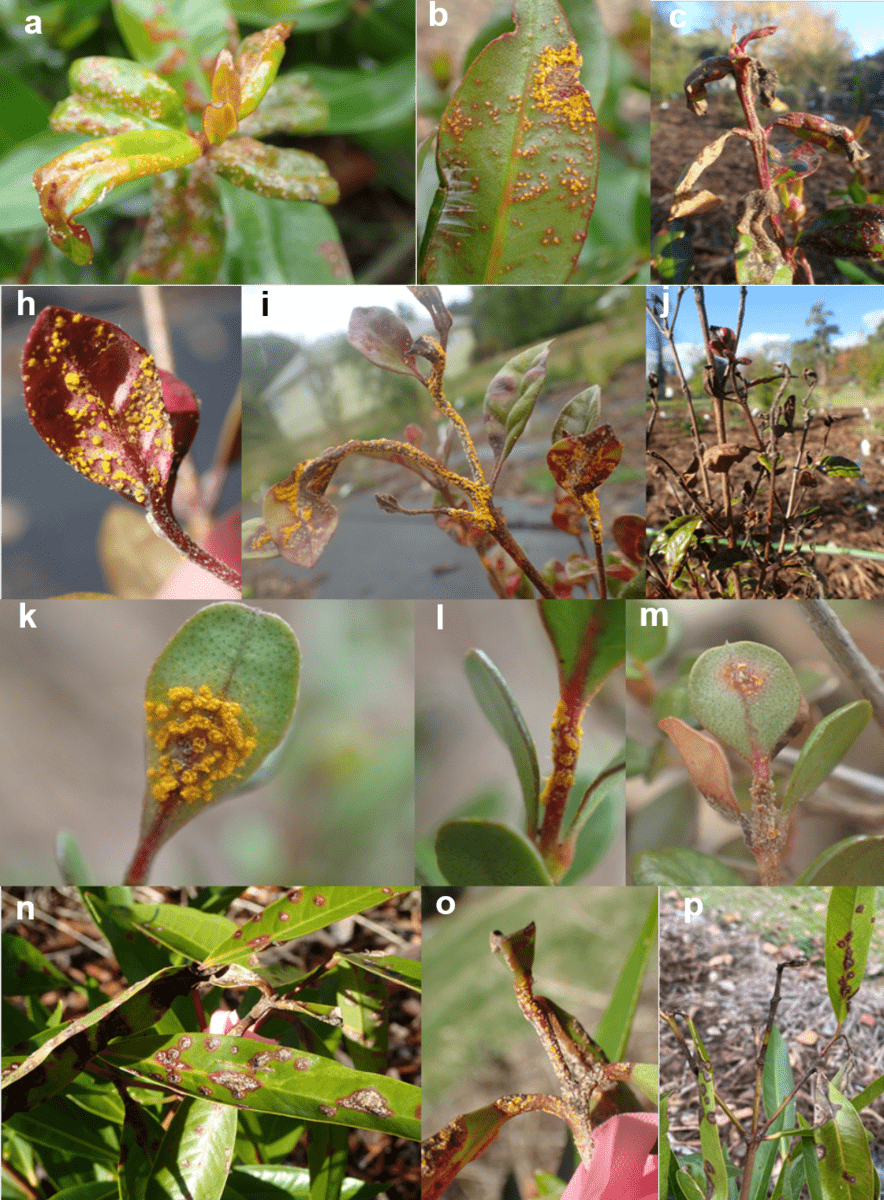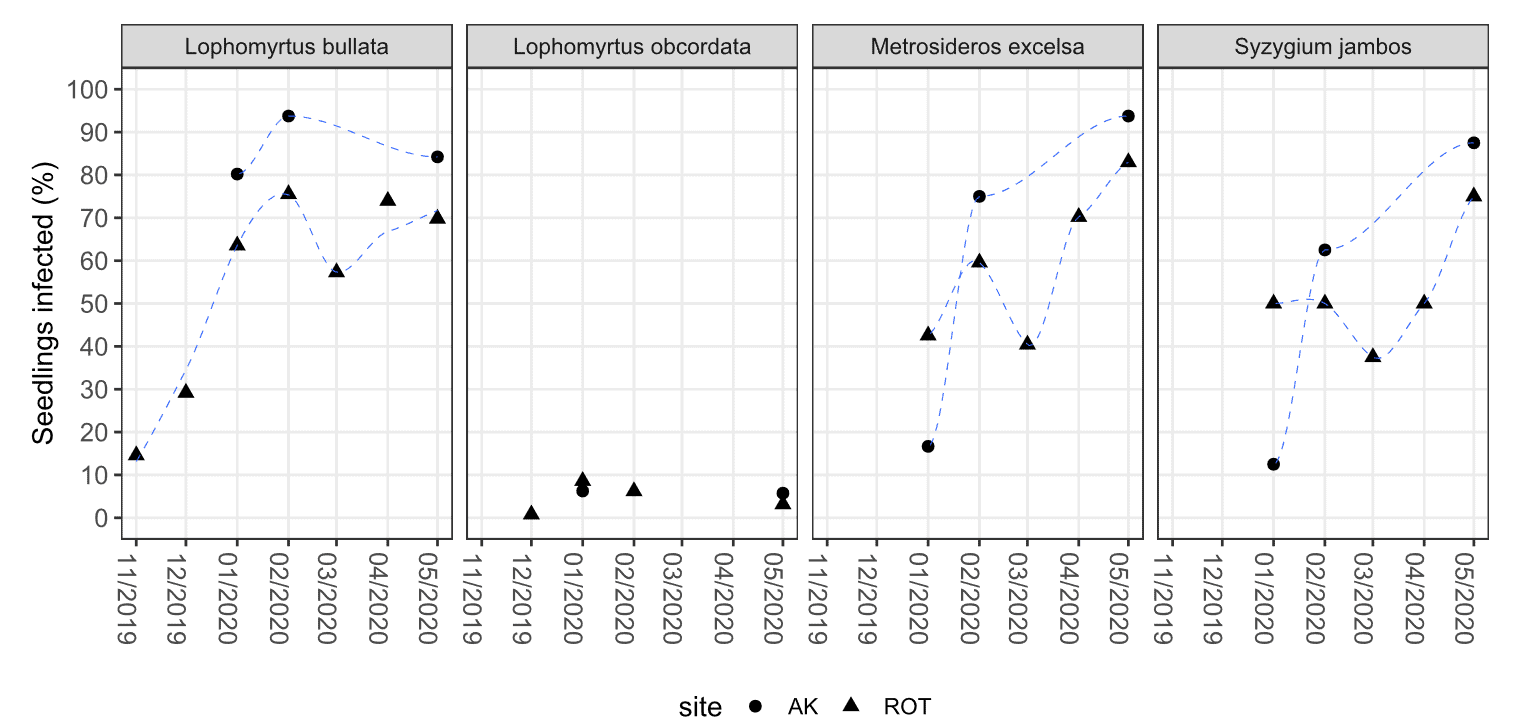
The problem
Determining the relative susceptibility to a new pathogen like A. psidii is important to predict the long-term ecological impact of myrtle rust and to adapt management strategies.
Currently, knowledge of the susceptibility of most New Zealand Myrtaceae is restricted to resistance screening performed under artificial inoculation, and to surveillance data collected during the incursion response. Without baseline information about the susceptibility of native Myrtaceae to A. psidii under natural conditions, it is impossible to predict the impacts the pathogen could have on wider ecosystems.
What we did
This project aimed to assess the relative risk posed by myrtle rust to six Myrtaceae species under natural New Zealand conditions.
The research team, led by Dr Julia Soewarto, established monitoring plots in Auckland and Rotorua at Plant & Food Research and Scion, respectively. They used five native species and one exotic: mānuka (Leptospermum scoparium), pōhutukawa (Metrosideros excelsa), kānuka (Kunzea robusta), rōhutu (Lophomyrtus obcordata), ramarama (Lophomyrtus bullata) and rose apple (Syzygium jambos).
The seedlings used in the plots came from the same seed families previously tested for susceptibility in the lab, which allows an assessment of the real-world relevance of artificial resistance screening. Regular assessments of the seedlings were conducted to measure the impact on the health and growth of each species.
What we found
While only established at the end of 2019, the team has made several important observations.
Severe myrtle rust developed on both pōhutukawa and ramarama, which fits with the results found from artificial inoculations. Almost no resistance was found for both these species in the field.
While rōhutu seedlings did not establish very well in the trial, data clearly show that this species is susceptible to the disease under natural conditions.
The exotic species rose apple was also highly infected, which fits with international observations that this species is very susceptible to A. psidii.
No myrtle rust symptoms have developed on kānuka or mānuka, despite these species being shown to be susceptible in controlled artificial inoculation experiments.

Looking forward
It is critical to keep monitoring these species over several seasons to accurately quantify the impacts of myrtle rust.
Further Myrtaceae species should be included in these type of trials, including representatives of the rātā group (Metrosideros bartletii, M. diffusa, M. fulgens, M. perforata, M. robusta) and Syzygium (S. maire, S. australe), for which little or no information about the relative susceptibility to myrtle rust is available. Other sites should also be included to evenly represent natural New Zealand conditions.
This work was funded by the New Zealand Ministry for Business, Innovation and Employment (MBIE) through the initial Ngā Rākau Taketake surge investment and Scion’s Science Strategic Investment Fund. It built on previous work funded by the MBIE Catalyst fund, the Ministry for Primary Industries, BioHeritage National Science Challenge and Better Border Biosecurity (B3).
